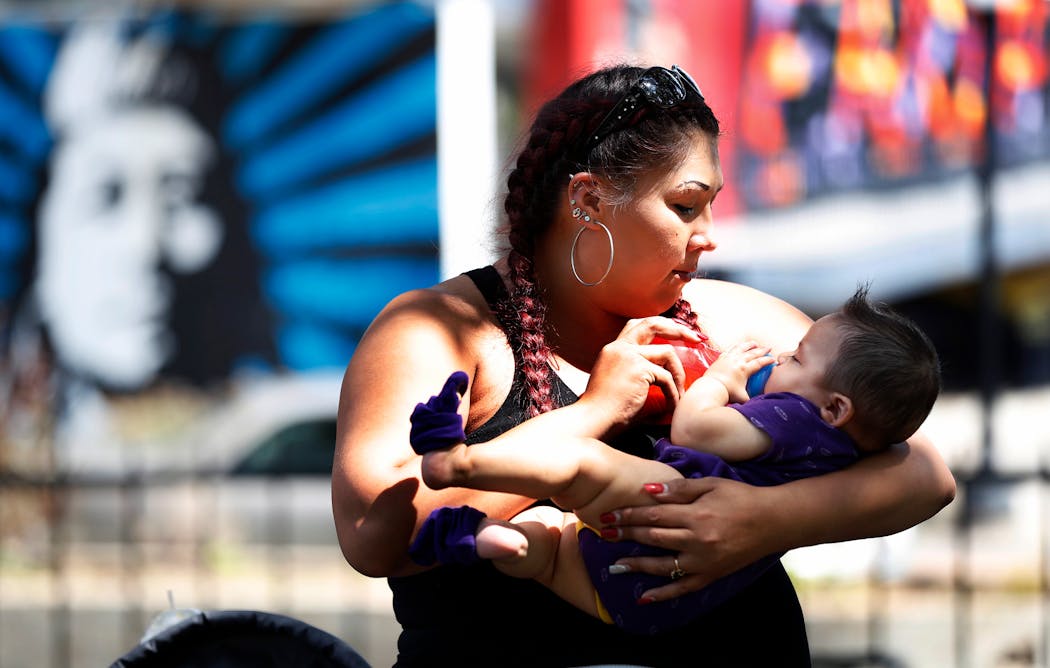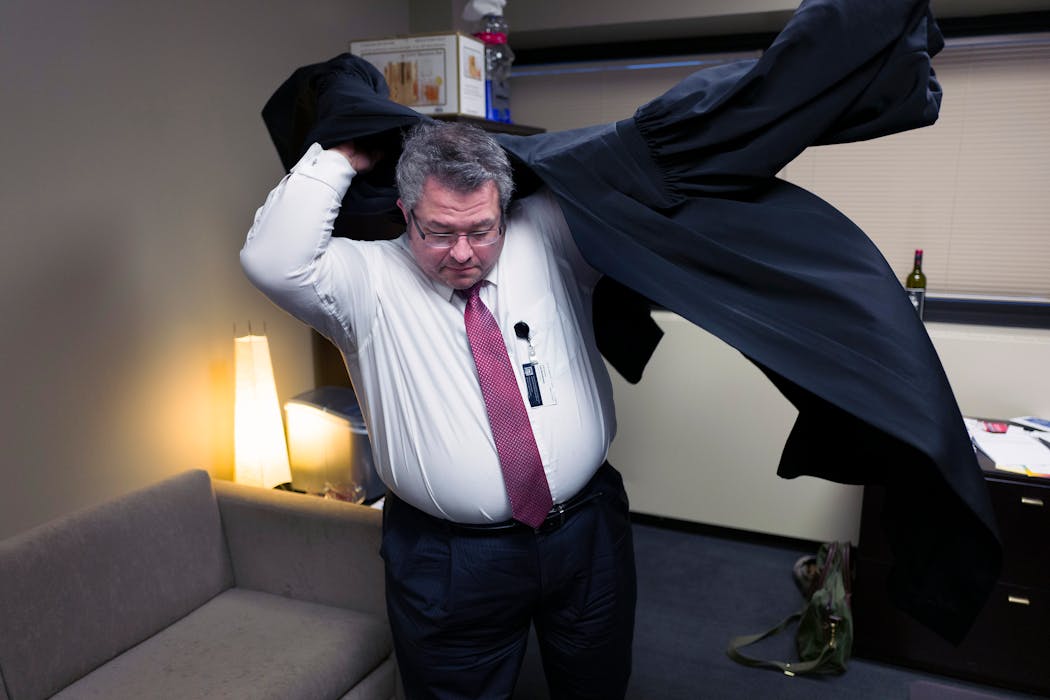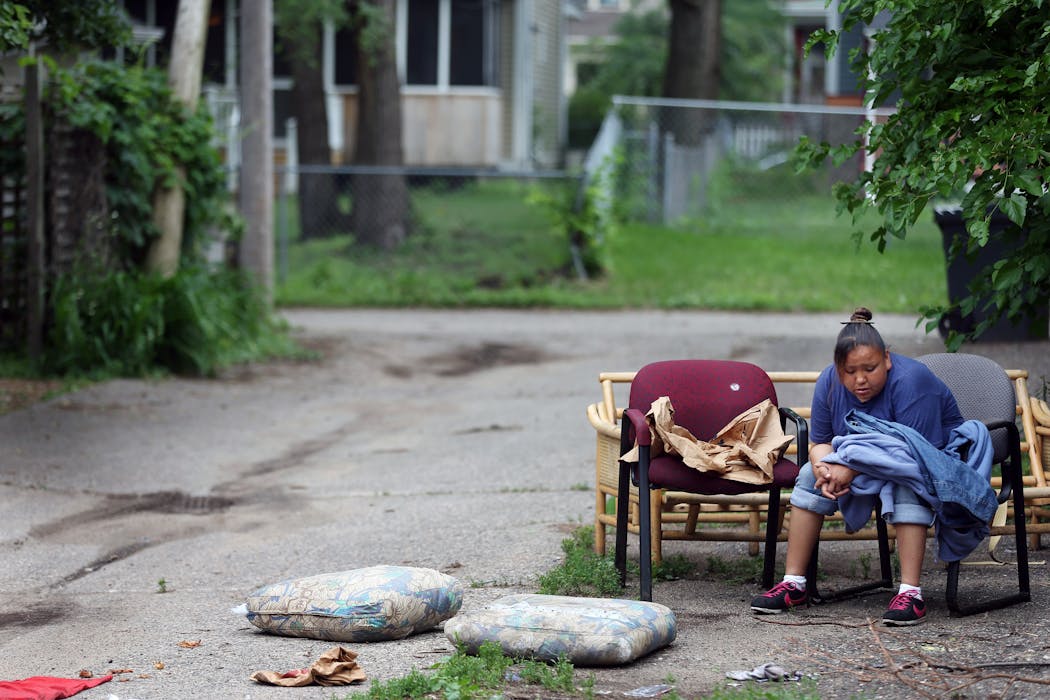From his bench on the second floor of Hennepin County's juvenile courthouse, Judge Luis Bartolomei will determine the future of five American Indian families.
Among them: A father accused of beating his 8-year-old daughter. A mother who gave birth to a methadone-addicted baby. A mother who at one point shot up heroin eight times a day.
"Oh my God," Bartolomei says in his chambers as he reads the county's report about the heroin case. "Oh my God."
In each of the five cases, Bartolomei will have to decide whether the best way to protect the children is to take them away from their parents.
For American Indian families, that's more likely to happen in Minnesota than anywhere else in the country.
Minnesota has more American Indian children in foster care than any other state, including those with significantly larger Indian populations, according to a Star Tribune analysis of federal and state data. Less than 2 percent of children in Minnesota are Indian, but they make up nearly a quarter of the state's foster care population — a disparity that is more than double the next highest state.
Indian children in Minnesota are five times more likely to be reported as victims of abuse than white children, and 10 times more likely to end up in foster care.
The rate of Minnesota's Indian children placed in foster care is higher now than it was in 1978, the year Congress passed the Indian Child Welfare Act (ICWA) that requires judges and social workers to preserve Indian families whenever possible.
The dilemma for Bartolomei and other judges around the country is balancing the demands of that law with the cases that end up in his courtroom. Indian leaders acknowledge that removing children from the family home is necessary in some cases, but they say the frequency with which it occurs in Minnesota shows that Indian families are held to a higher standard than others.
"The number of Indian families being broken apart is a crisis-level problem, threatening the survival of American Indians as a community and as a culture," said Melanie Benjamin, chief executive of the Mille Lacs Band of Ojibwe.
State officials, including Gov. Mark Dayton, acknowledge that the number of Indian children placed in foster care is a problem. "I share the concern of tribal leaders that too many Indian children are being removed from their homes and their communities," Dayton told the Star Tribune.
State officials concede that bias may play a role in foster care decisions, which are made by social workers and judges at the county level.
"We have to look at the way we practice social work and child protection," said Jim Koppel, the head of Children and Family Services for the Minnesota Department of Human Services (DHS). "And we have to look at those causes, those root causes that drive so much instability in families."
Not all Indians agree that child protection agencies in Minnesota are too aggressive about pulling Indian children from their homes. Mark Fiddler, a Minnesota attorney and member of the Turtle Mountain Band of Chippewa Indians, believes too many states are reluctant to intervene in cases of abuse because of the federal law.
"Minnesota is the only state that's doing it right," Fiddler said. "If anything, there should be more Indian children put into foster care."
The question that weighs heavily on Bartolomei: By saving a child, is he destroying a culture?
'They just keep coming'
For many Indians across the state, child protection agencies are a constant and unwelcome presence. At the Little Earth housing complex in Minneapolis, the largest urban Indian community in the state, resident Margarita Ortega said if she sees someone walking in the neighborhood she doesn't know, she assumes it's a child protection worker.
"They're like the villain in a bad horror movie," she said. "They just keep coming."
Elaine Brown lives in fear of child protection workers.
When she was 3 months old, social workers removed her and her two brothers from their alcoholic parents and placed them in an abusive foster home on a farm near Crookston. She's still shaken by the memory of her foster mother ordering her to scrub the brown from her neck, which she did until she bled and cried in agony.
As a parent, Brown, a member of the White Earth Nation, turned to alcohol to cope with the pain of her childhood. Child protection placed her own children into foster care three times.
Now 56, Brown is trying to protect her grandchildren from the same fate.
Blankets cover the windows of her south Minneapolis efficiency apartment. With her health problems, she sometimes worries about how long she can continue to care for the children, ages 3, 5 and 7, who sleep on two mattresses on the floor.
She briefly considered calling child protection for help, but didn't want to risk having them taken from her and placed in foster care.
"I don't want my grandkids to have no future, like I have no future," she said.
Brown has good reason to worry. Once taken from their families, Indian children generally fare worse than other children, according to a Star Tribune analysis of state DHS and federal Administration for Children and Families data. They stay longer in foster care, move among more homes, and cycle more often between foster care and their birth families. Children who turn 18 while in foster care and "age out" of the system are less likely to graduate from college and find a job. One in four will suffer from post-traumatic stress disorder. One in five will become homeless.
It's a cycle Judge Korey Wahwassuck has watched unfold over the course of her career.
Fifteen years ago she was an attorney at the Leech Lake reservation's tribal court representing children who were pulled from their homes by child protection. Then Wahwassuck became a tribal judge, presiding over delinquency cases involving many of the same children.
Now she's a judge in Itasca County, and "those children are sitting in front of me in criminal court wearing orange jump suits," she said. "They're in child protection court, trying to keep their kids."
Understanding history
No study, research or report explains the unusually high rate of Indian children in foster care in Minnesota.
Ask Minnesota Indians, and many quickly point to a legacy dating back to the days of forced relocation and boarding schools, when whites saw Indians as savages who needed to be assimilated.
Korina Barry, an Ojibwe and a former Hennepin County child protection worker, said not enough social workers in the state know that, generations later, the effects of those policies continue to ripple through Indian families.
"They need to be trained in historical trauma, how that affects people today," said Barry, now the outreach director at the University of Minnesota's Center for Advanced Studies in Child Welfare. "The system, the courts, they don't know that. They don't understand that."
Benjamin believes something more insidious is at work: racial bias. She said child protection workers are more likely to equate living in poverty with neglect in cases involving Indian families. The number of children in Minnesota removed from their parents for neglect, which can be more arbitrary and difficult to define than physical abuse, is nearly twice as high for Indian children as for whites, state data show.
"If families get into the child welfare system," Benjamin said, "the first thing they want to do is take kids away instead of working with the families."
Benjamin and other Indian leaders say placing so many Indian children into foster care perpetuates the cycles of drug and alcohol abuse, mental illness, poverty and neglect for the next generation.
More than a third of Minnesota's Indians live below the poverty line, and they have the lowest participation in the state's labor force of any racial or ethnic group, according to census data. But Indians in other states have even higher rates of poverty, unemployment and drug- and alcohol-related deaths, with lower rates of foster care placement.
So what's different in Minnesota when it comes to foster care?
"I don't have a clear answer," Koppel said. "I wish I did, and we would address it."
'Likely to suffer'
By the time he takes up the case of Denise Robinson, Bartolomei has already ordered six Indian children into foster care.
Robinson's case is different from the others that come before Bartolomei this day. She has not been accused of physically abusing or neglecting her month-old son, but he was born addicted to the methadone Robinson was receiving to treat her own addiction. The 28-year-old descendant of the Leech Lake Band of Ojibwe also has a troubled history that resulted in her having a child taken away in 2012.
Her newborn's addiction is one reason Assistant County Attorney Kacy Wothe opposes allowing the boy to go with his mother.
Robinson takes deep breaths and tries not to cry as Wothe speaks. She gazes down, avoiding eye contact with Bartolomei. Later, she recalled what she was thinking at that moment: "This is happening all over again. I'm going to lose my son. I'm going to lose him forever."
Robinson's family and friends call her "Nisee." She grew up in a stable Roseville home and appeared to have a bright future. But then her stepfather died about nine years ago. She said her mother got hooked on painkillers after going through several surgeries. Her family fell apart. They became homeless.
Robinson started using drugs. After her first child was taken from her, "I fell off the deep end," she admitted. She became a full-blown addict and petty criminal. Over the next four years she would be convicted of theft 18 times before being committed to treatment in September 2015. She hasn't failed a drug test since.
When she gave birth in January to the boy she calls "my bug," she believed she could take him home with her. At her February hearing, her attorney, Ron Walters, tells the judge she has earned that right.
"My client is now seven months sober, has been voluntarily in treatment since the end of her civil commitment several months ago," Walters says. "My client is nursing this child, is breast-feeding this child. … And that would need to be interrupted if the child went into shelter placement."
Bartolomei folds his fingers together and taps them against his forehead. Before he can make a decision, he must by law ask the opinion of the Leech Lake band, which is represented by attorney Paul Minehart.
Minehart, who is white, started working on a reservation out of law school in the 1980s, then worked on Indian Child Welfare Act cases for 21 years at the Minneapolis American Indian Center. He's involved in so many Indian foster care cases that his friendly smile and gray hair have become a fixture in the waiting area of the juvenile court.
Minehart's recommendation — that her child be placed in foster care — shocks Robinson. She shakes her head, trying but failing to hold back tears.
"Ms. Robinson has a history," Minehart said. "It's an old history, but it's an extensive history. … She did not engage in services with her older child when she was involved in this court with that child."
After the child's court-appointed advocate also recommends foster care, Bartolomei takes only a few seconds before pronouncing that Robinson's infant son "is likely to suffer serious emotional or physical damage if returned to the custody of Ms. Robinson at this moment." The baby will go into foster care after he's released from the hospital, and Robinson will have supervised visits with her son for a few hours a day.
To get her child back, she'll have to follow a case plan, an assortment of tasks that are typical in almost any child protection case: Stay sober. Pass drug tests. Find safe housing. Finish treatment.
Robinson puts her head in her hands. "How long is that for?" she asks Bartolomei.
"I don't know," Bartolomei replies.
Robinson breathes in hard and wipes her face with a wet tissue, then stands up and begins to walk away.
Bartolomei tells her, "Good luck, Ms. Robinson."
'Active efforts' required
Federal law requires judges and social workers to make "active efforts" to keep Indian children with their parents, or place them with other American Indian families. William Thorne, a retired Utah appeals judge and national ICWA authority, described "active efforts" as "what you would do for a good friend if they asked you for help."
Guidelines issued by the Bureau of Indian Affairs require a child be returned to the home as soon as an emergency has ended. If an Indian child stays in foster care, then the court needs to get the approval of an expert familiar with the tribe's culture and customs.
If the requirements of the Indian Child Welfare Act are not observed, then a decision to remove a child can be reversed.
In Minnesota and elsewhere, however, there is a shortage of Indian families willing or eligible to be foster parents. Only about half the Indian children in foster care in Minnesota are in Indian homes, according to the state Department of Human Services. Only a third of roughly 400 Indian children put up for adoption in Minnesota between 2009 and 2013 went into homes with at least one Indian parent, the Star Tribune found.
Meanwhile, supporters of the Indian Child Welfare Act have found themselves on the defensive after some high profile cases of Indian children being removed from non-Indian foster homes. A lawsuit in Arizona seeks to have federal judges declare the law unconstitutional, arguing that it fails to provide equal protection for Indian children.
Bartolomei does not accept the idea that federal law makes it more difficult to protect Indian children while preserving their culture.
"We can do both," he said.
'Want to take our kids'
Indian parents failing to comply with court orders lose their children an average of twice a week in Minnesota.
Robinson is determined not to be one of those parents. Not again.
"There's a system where they just want to take our kids," Robinson said. "I don't know why it is."
In July, she returned to the Juvenile Justice Center pushing a baby stroller with one arm, carrying her son in the other. She cooed to him when he dropped his stuffed animal, and soothed him when his asthma caused him to cough.
Robinson has done so well in treatment since her court appearance in February that she's gradually been given more time with her son. The county no longer wants to terminate her parental rights. They still want the boy in foster care, but with a plan that would fully reunite him with his mother.
In the courtroom, she bounces her son on her lap when he fusses, rocks him and gives him a bottle. In between, she tells Bartolomei that yes, she and her son do still need help from child protection. She still needs permanent housing, which Bartolomei orders the county to assist with.
Then he congratulates her.
"You have a history behind you. It's not a good one, by any stretch," he tells her. "But here you are. And hope springs eternal."
Brandon Stahl • 612-673-4626

Trail section at one of Minnesota's most iconic spots closing for rehab

Will 'shotgun only' zone for deer in southern Minnesota be abolished?

Four Minnesotans catch salmonella in outbreak linked to basil sold at Trader Joe's




